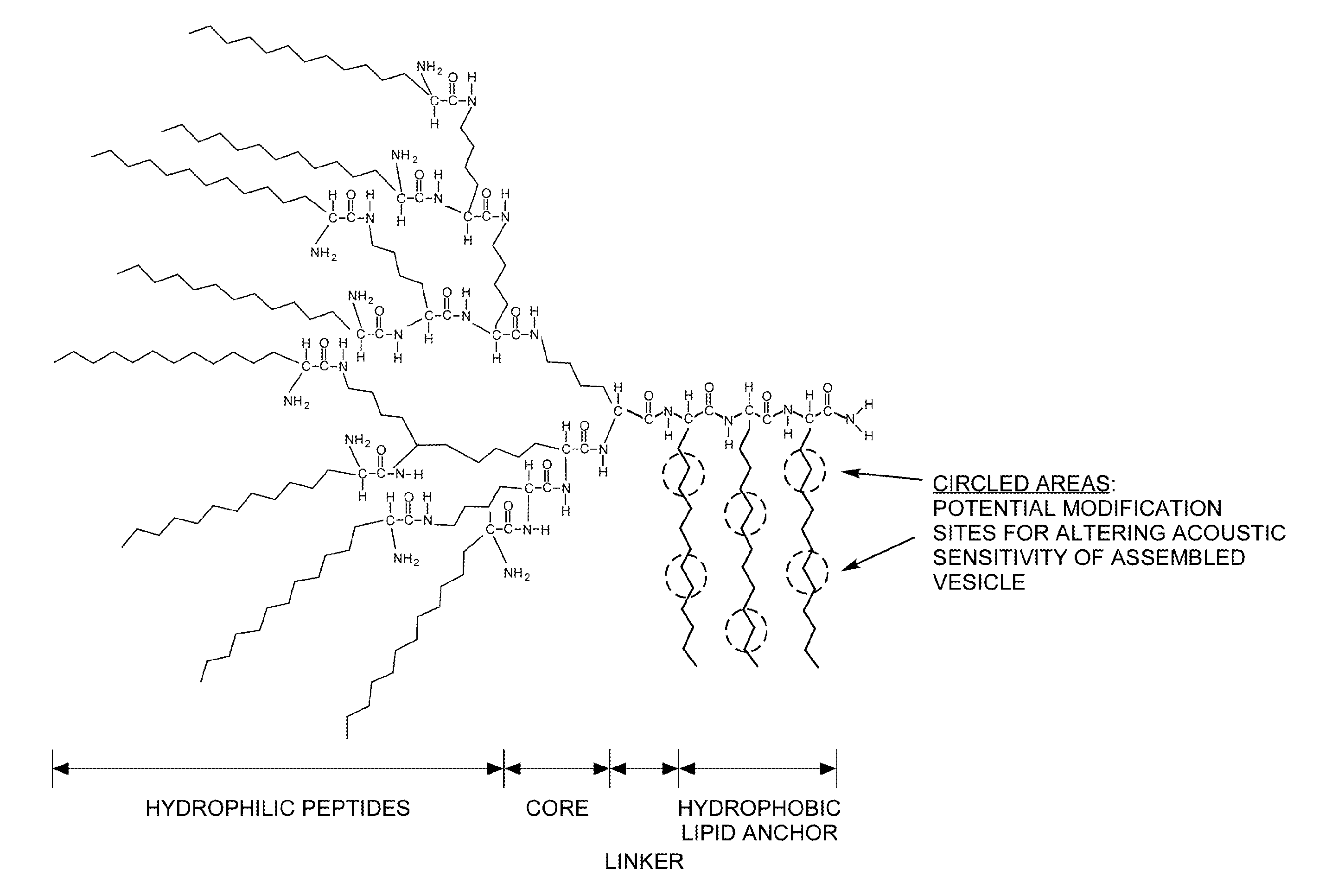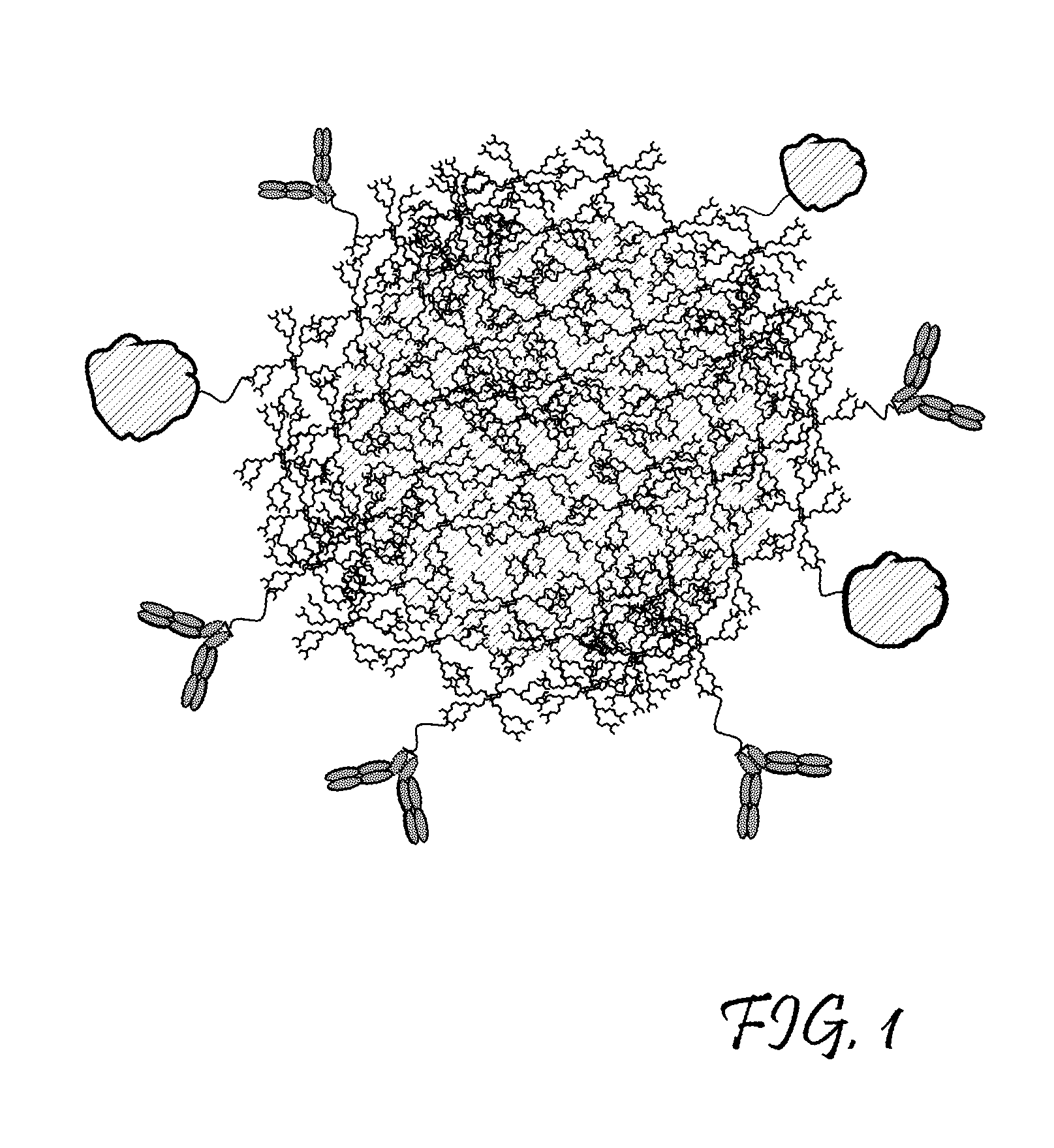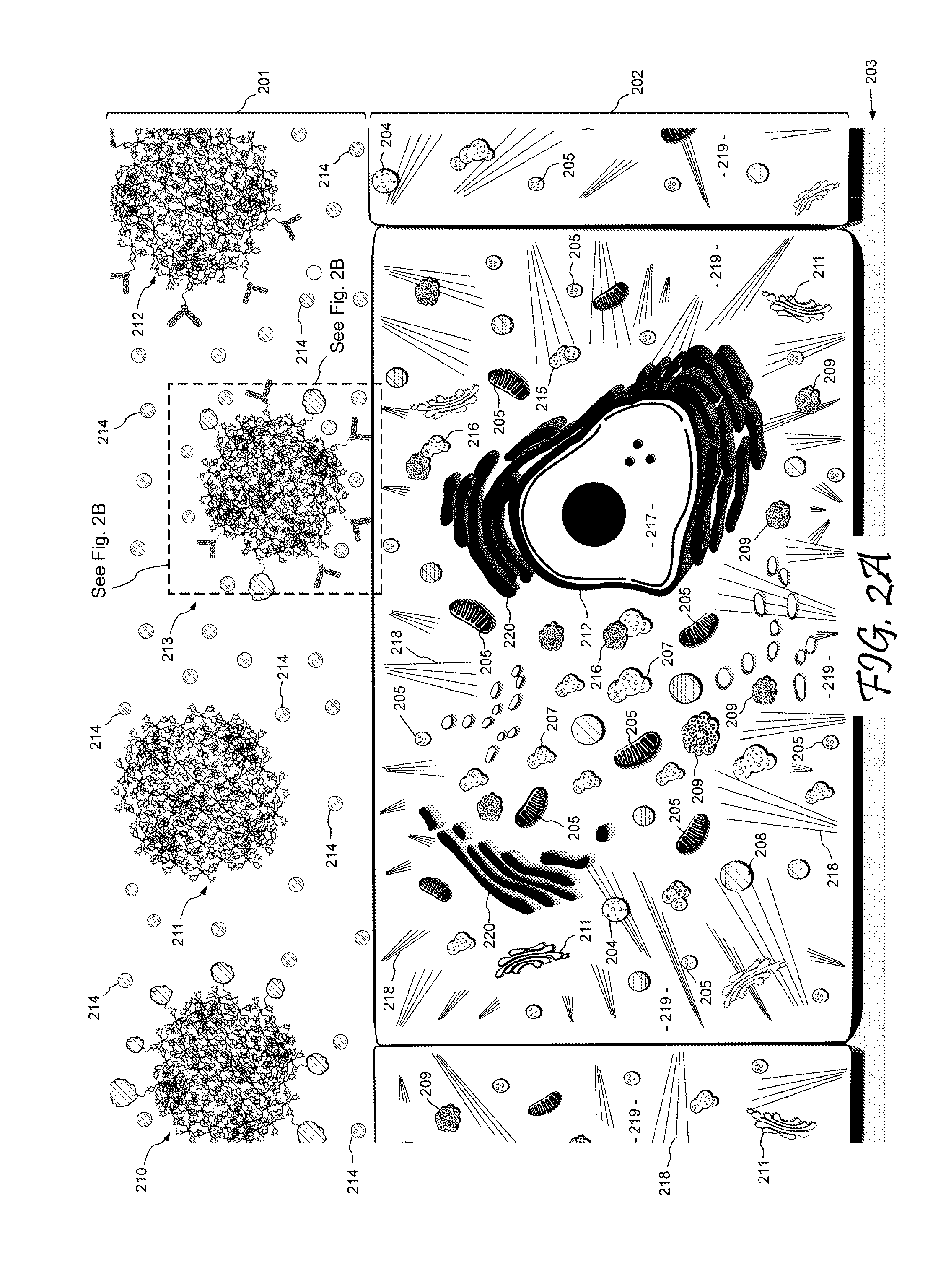Dendritic Polymers for Use in Acoustically Mediated Intracellular Drug Delivery in vivo
- Summary
- Abstract
- Description
- Claims
- Application Information
AI Technical Summary
Benefits of technology
Problems solved by technology
Method used
Image
Examples
example 1
Prospective Example: Synthesis of 2-[cis-1,3-O-benzylidene glycerol]succinic acid monoester
[0385]This prospective example demonstrates the synthesis of 2(cis-1,3-O-benzylidene glycerol)succinic acid monoester (FIG. 11). 17.00 gm (0.09434 mole) of cis-1,3-O-benzylidene glycerol and 14.42 gm (0.1441 mole) of succinic anhydride are stirred in pyridine at room temperature for 18 hours. The pyridine is removed and the white powder is dissolved in dH2O. The pH of the water layer is then adjusted to 7.0 with 1 N NaOH and washed with CH2Cl2 to remove impurities. The water layer is then adjusted to pH 4.0 with 1 N HCl. The product (FIG. 11) is extracted with CH2Cl2, dried over Na2SO4, and filtered.
example 2
Prospective Example: Synthesis of cis-1,3-O-benzylidene-2-O-[succinate methylphthalimide] glycerol
[0386]This prospective example demonstrates the synthesis of cis-1,3-O-benzylidene-2-O-(succinate methylphthalimide) glycerol (FIG. 12). 4.004 gm (0.01429 mole; 1 equivalent) of cis-1,3-O-benzylidene-2-O-(succinic acid) glycerol, 3.803 gm (0.01584 mole; 1.1 equivalent) of N-bromomethylphthalimide and 2.002 gm (0.03446 mole; 2.4 equivalents) of potassium fluoride are stirred in N,N-dimethylformamide (DMF) at 85° C. for two hours. The DMF is removed under a vacuum. The solid product is dissolved in CH2Cl2, washed with water, saturated NaHCO3, dried over Na2SO4, rotovapped, and precipitated in ether. The final product (bzld-G1-PGLSA-phth dendron; FIG. 12) is recrystallized in MeOH.
example 3
Prospective Example: benzylidene Deprotection of cis-1,3-O-benzylidene-2-O-[succinate methylphthalimide] glycerol
[0387]This prospective example demonstrates the benzylidene deprotection of cis-1,3-O-benzylidene-2-O-(succinate methylphthalimide) glycerol (FIG. 13). The benzylidene protecting group of cis-1,3-O-benzylidene-2-O-(succinate methylphthalimide) glycerol is removed by catalytic hydrogenolysis. 2.00 gm of cis-1,3-O-benzylidene-2-O-(succinate methylphthalimide) glycerol is dissolved in EtOAc / MeOH (9:1) and 10% w / w 10% Pd / C is added. The solution is then placed in a Parr tube on a hydrogentator and shaken under 50 atm H2 for 1 hour, and then filtered over wet celite. The product (FIG. 13) is purified by column chromatography (CH2Cl2:MeOH 95:5), which is a clear oil.
PUM
| Property | Measurement | Unit |
|---|---|---|
| Length | aaaaa | aaaaa |
| Fraction | aaaaa | aaaaa |
| Length | aaaaa | aaaaa |
Abstract
Description
Claims
Application Information
 Login to View More
Login to View More - R&D
- Intellectual Property
- Life Sciences
- Materials
- Tech Scout
- Unparalleled Data Quality
- Higher Quality Content
- 60% Fewer Hallucinations
Browse by: Latest US Patents, China's latest patents, Technical Efficacy Thesaurus, Application Domain, Technology Topic, Popular Technical Reports.
© 2025 PatSnap. All rights reserved.Legal|Privacy policy|Modern Slavery Act Transparency Statement|Sitemap|About US| Contact US: help@patsnap.com



